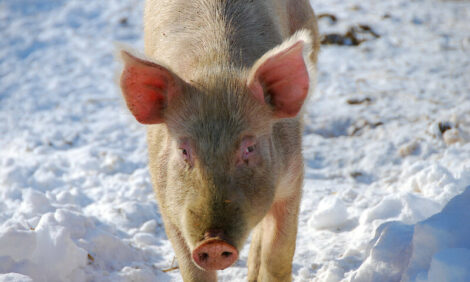



New serological tests provide accurate identification of Senecavirus A
New research provides producers with a combined testing system to monitor and differentiate incidences of vesicular disease.Researchers, Dr Steven Lawson, Dr Diego Diel, Eric Nelson, A. Singrey, Dr Jane Christopher-Hennings, Austin Van Asselt, David Knudsen, Laura Munger and Hanvid Cho, set out to develop improved diagnostic capabilities for Senecavirus A (SVA) to fulfill industry needs for the differentiation between SVA and other picornaviruses in circulation.
The results of their research, completed at South Dakota State University, have now been published by the funding body, the National Pork Board, under the title, Development of a bELISA for serological diagnostics and surveillance of SVA infection.
Summary
Senecavirus A (SVA) is a small, non-enveloped, positive stranded RNA virus responsible for causing severe vesicular disease and neonatal mortality. The problem with this emerging virus is that it is clinically indistinguishable from foot and mouth disease virus (FMD). Currently, there are limited antibody reagents and diagnostic tests available for herd surveillance and confirmation of this disease.
To address these industry needs, we immunised mice to produce monoclonal antibody (mAb) reagents against capsid proteins VP1 and VP2 for immunohistochemistry (IHC), fluorescent antibody (FA) staining and virus isolation (VI) testing. In addition, we developed two separate serological assays: a blocking ELISA (bELISA), and a new mAb based, highly sensitive, serum virus neutralisation (SVN) assay for immune surveillance of disease.
The bELISA as optimised, has the ability to detect a broad antibody response as soon as 5 days post infection including a robust IgM response which is produced early during infection. The significance of this test is that is it able to simultaneously detect the appearance of all antibody isotypes, thus decreasing the time of detection of a serological response. The bELISA is now validated for use to provide an additional testing platform for herd surveillance and confirmation of disease. In addition, resultant mAbs have also allowed for the development of an IHC test for routine in-situ detection of viral protein antigen within tissues, and a more sensitive serum virus neutralising assay (SVN) capable of detecting infection beyond 6 weeks post infection.
Taken together, both tests and antibody reagents will provide producers much needed, sensitive and specific assays to serologically monitor and differentiate incidences of vesicular disease outbreak.








